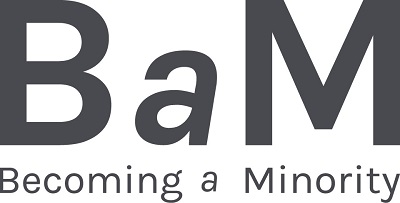Over the last forty years, researchers in the Field of Migration and Ethnic Studies looked at the integration of migrants and their descendants in host societies. Concepts, methodological tools and theoretical frameworks have been developed to measure and predict integration outcomes across different ethnic groups, usually in comparison with people of native descent.
The one-sided focus on the integration of ethnic minorities persists, even though there is wide acknowledgment of integration being a two-way process (cf. Garces-Mascareňas and Penninx 2016; Martinovic 2013). However, in many Western European cities people of native ‘white’ descent are becoming a minority themselves.
The BaM project focuses on the lives of people without a migration background living in ethnically diverse neighborhoods where everybody belongs to a minority now. In a city like Amsterdam, today only one in three youngsters under the age of fifteen has both parents born in the Netherlands. This situation, where everybody belongs to a minority, is referred to as majority-minority context. This demographic make-up is becoming more and more common in many neighborhoods of large Western European cities. For example, in 40% of the neighborhoods of Amsterdam, people of Dutch descent are now a numerical minority.
The BaM project undertakes research in the harbor cities Rotterdam, Antwerp and Malmö and the service sector cities Amsterdam, Hamburg and Vienna. First, an international survey has been conducted among people living in majority-minority neighborhoods. The BaM survey inquires; how do people engage with each other in these neighborhoods? Do they experience conflicts and, if so, what are these about? What do people appreciate about the neighborhoods? With whom do they interact in the street, what connects them – or not - in the playground of their children, with whom do they interact when having coffee in a local bar? Our survey is followed up by qualitative interviews and ethnographies in a selection of the majority-minority neighborhoods in each city to gain in-depth knowledge about the attitudes and behavior in diverse contexts.
An initial analysis of the BaM survey data revealed interesting trends across the cities. Ever since the Contact Hypothesis (Allport 1954), the emphasis has been on the positive effects of interethnic contact on people’s attitudes towards ethnic diversity, but how should we read the contradiction between people’s positive attitudes combined with a lack of interethnic contact in their practices? In our survey data we find a considerable group of people without migration background, who by choice live in ethnically diverse neighborhoods, appreciate and ‘consume’ the diversity around them (going to the Asian supermarket and Turkish grocery shop) but, at the same time, do not really engage in interethnic contact.
A similar gap can be observed in relation to the Ethnic Group Threat Theory. Our BaM data show that it is common that people who express to perceive ethnic threat and voice anti-immigrant feelings, at the same time engage in contact with their neighbors and/or colleagues of immigrant descent, and evaluate this contact positively.
Currently we further study the background characteristics of the people without a migration background who present these different attitudes and practices in relation to diversity experiences. Are their different attitudes and practices related to their socio-economic position, educational level, ethnic background of their partner, having children, or earlier experiences with diversity or upbringing?
In these deeper investigations we enhance our understanding of diversity experiences. For example, we investigate how BaM survey respondents who are in a mixed relationship differ – or not – in their diversity practices (focusing on their social network) and attitudes towards diversity. Though they would seem a key group in understanding people’s reaction to diversity, so far little research has been done on how the partners without migration background are influenced by being in a mixed relationship. Our BaM team finds that people in a union with someone with migration background are more open towards cultural diversity, have a more mixed social circle, and regard migrants as contributing to the countries’ economic wealth. Since almost one in three BaM respondents with a partner is in a mixed relationship, their influence on the general climate in these neighborhoods should not be underestimated.
The BaM project will deliver important outcomes for the people who live in these neighborhoods, as well as for policymakers and politicians. There are a lot of opinions in the media and in politics on migration and diversity, but people who live their daily life in a diverse setting have a lot more to say about how they experience this. The BaM project will deliver their perspectives.

